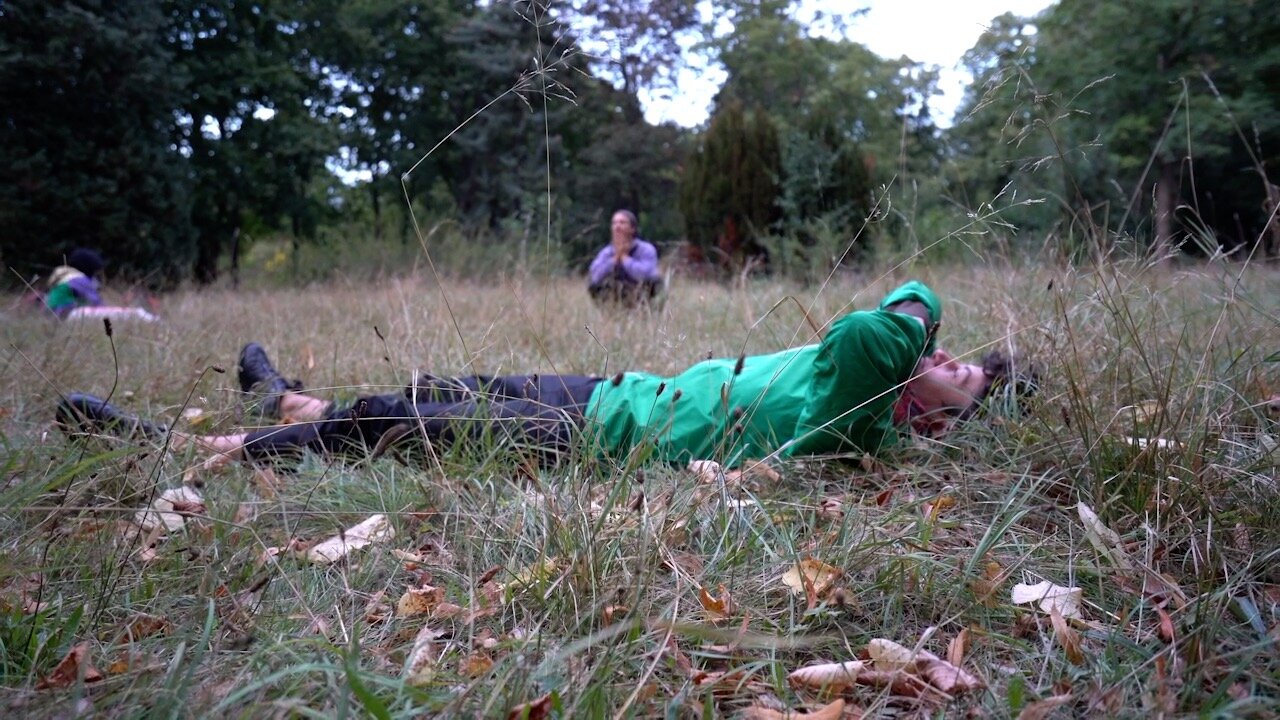
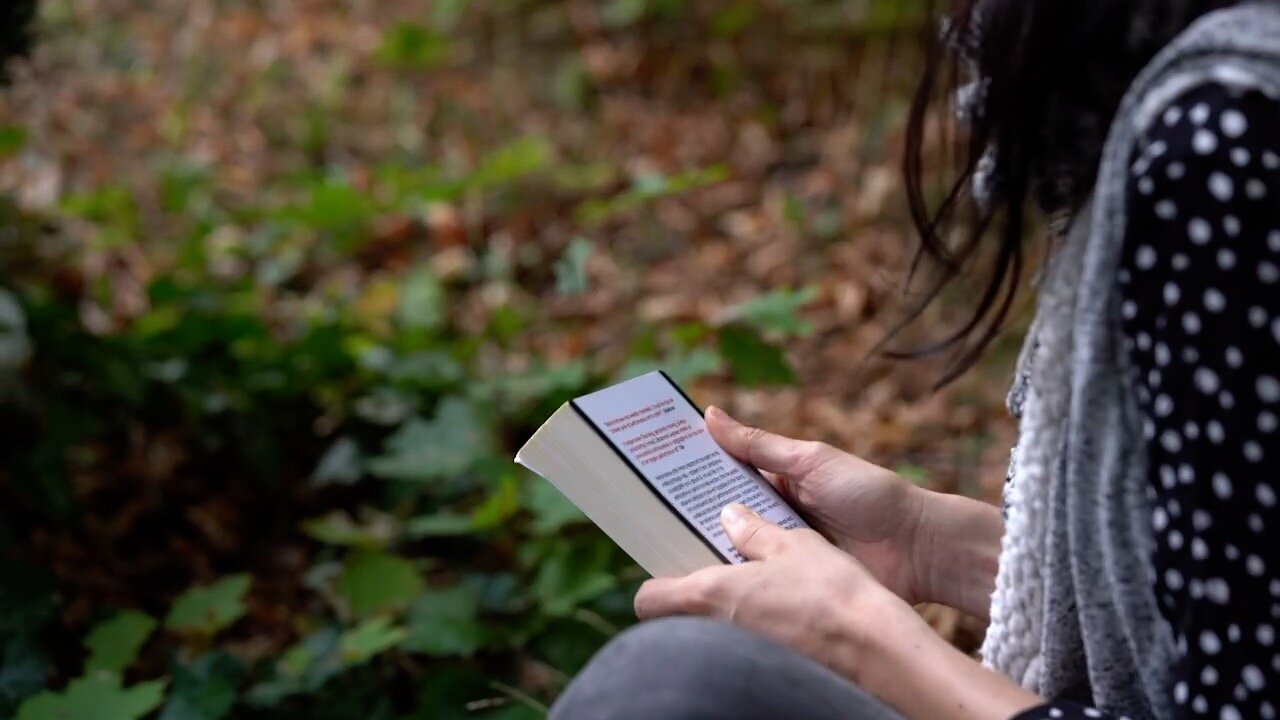
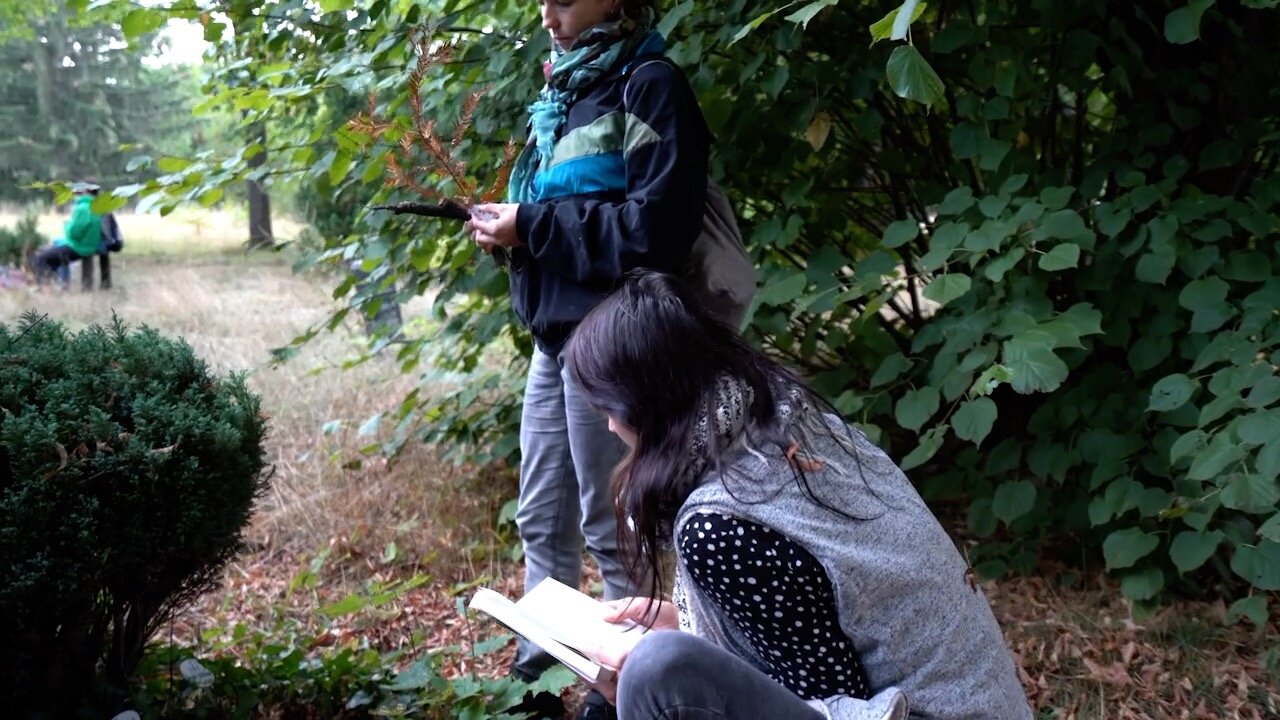
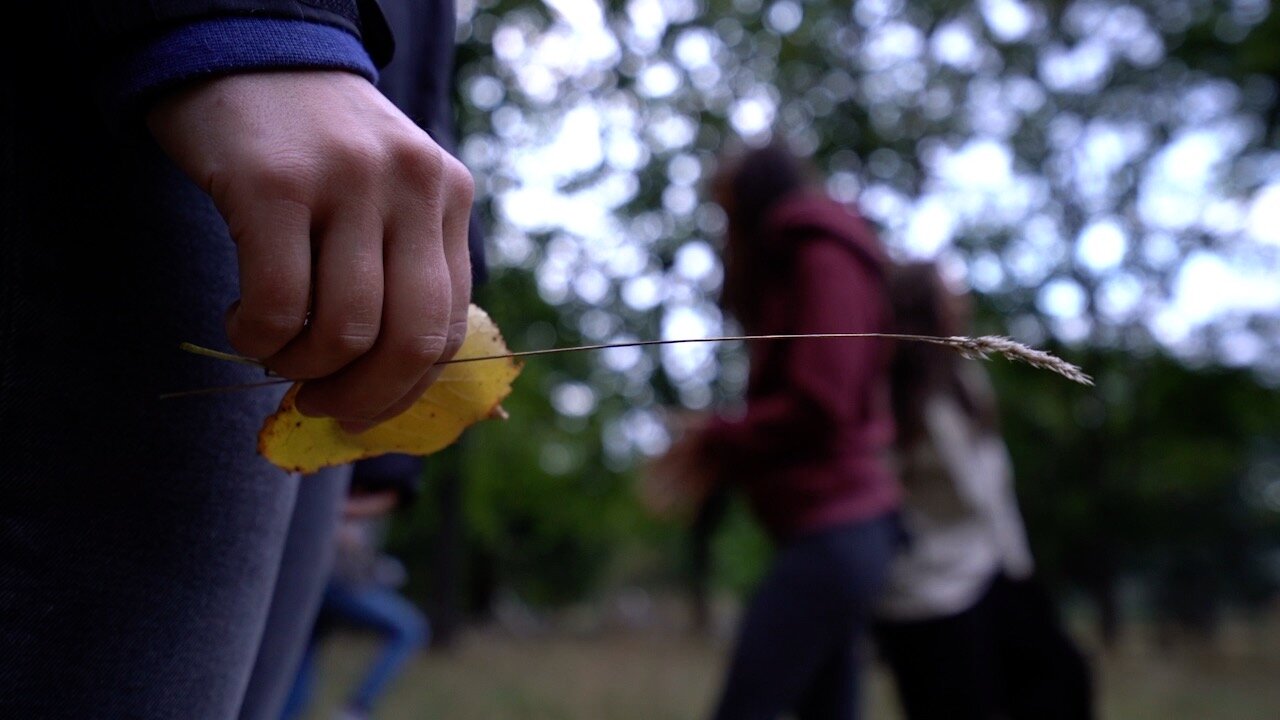
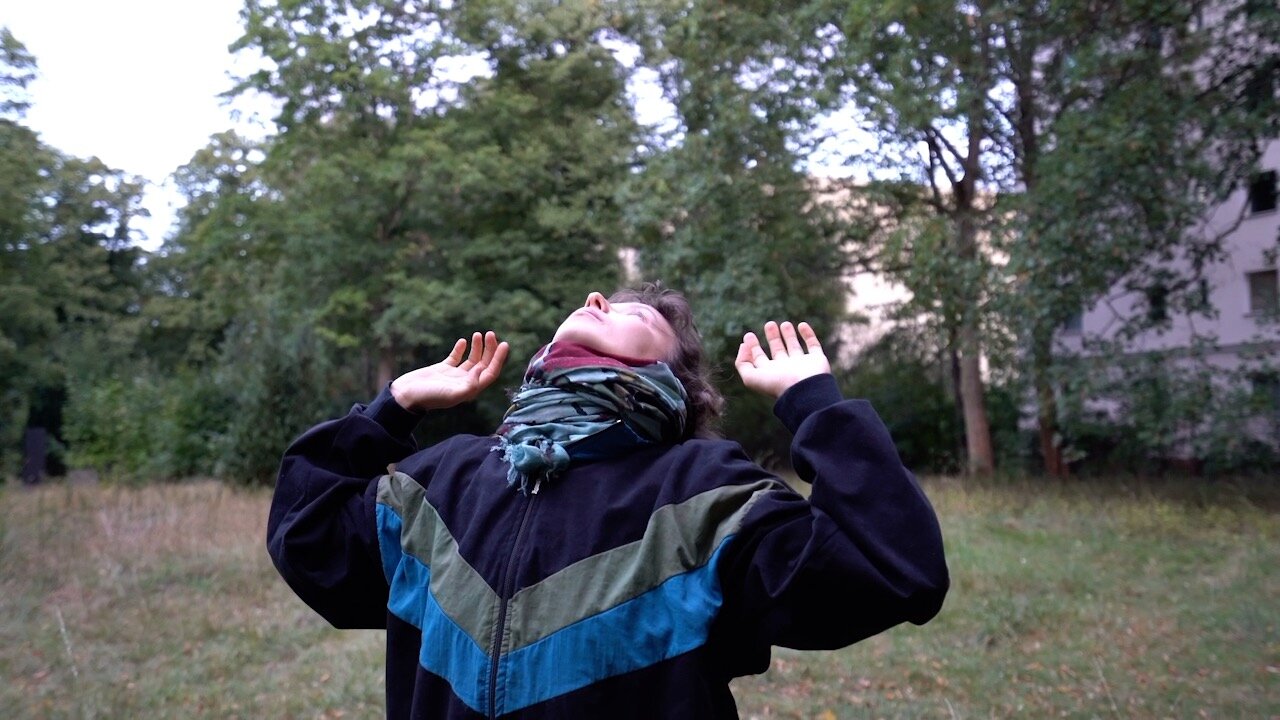
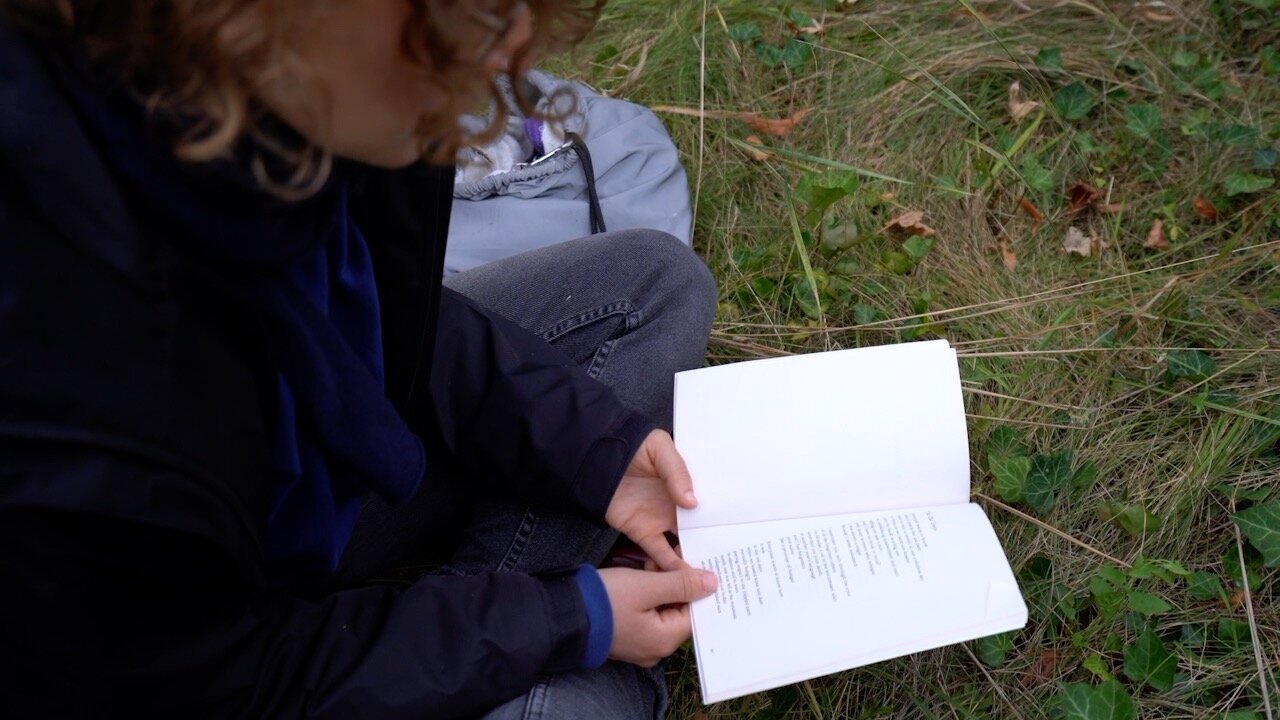
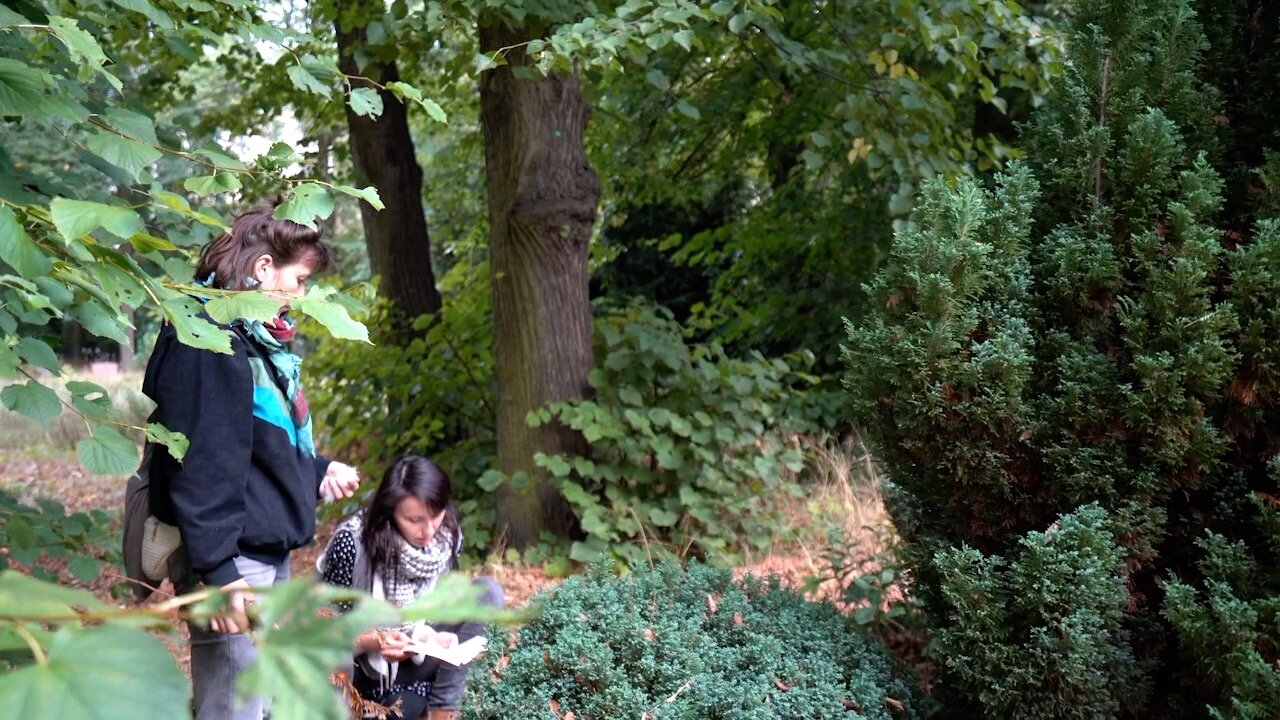
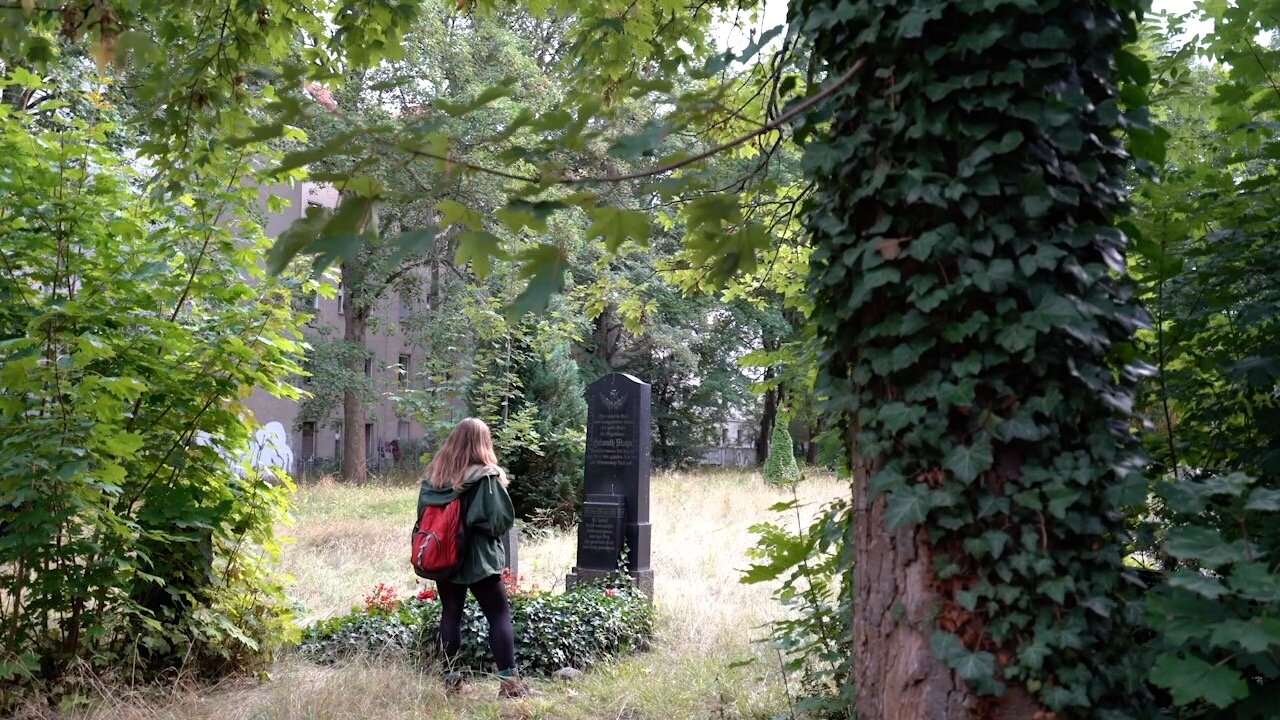
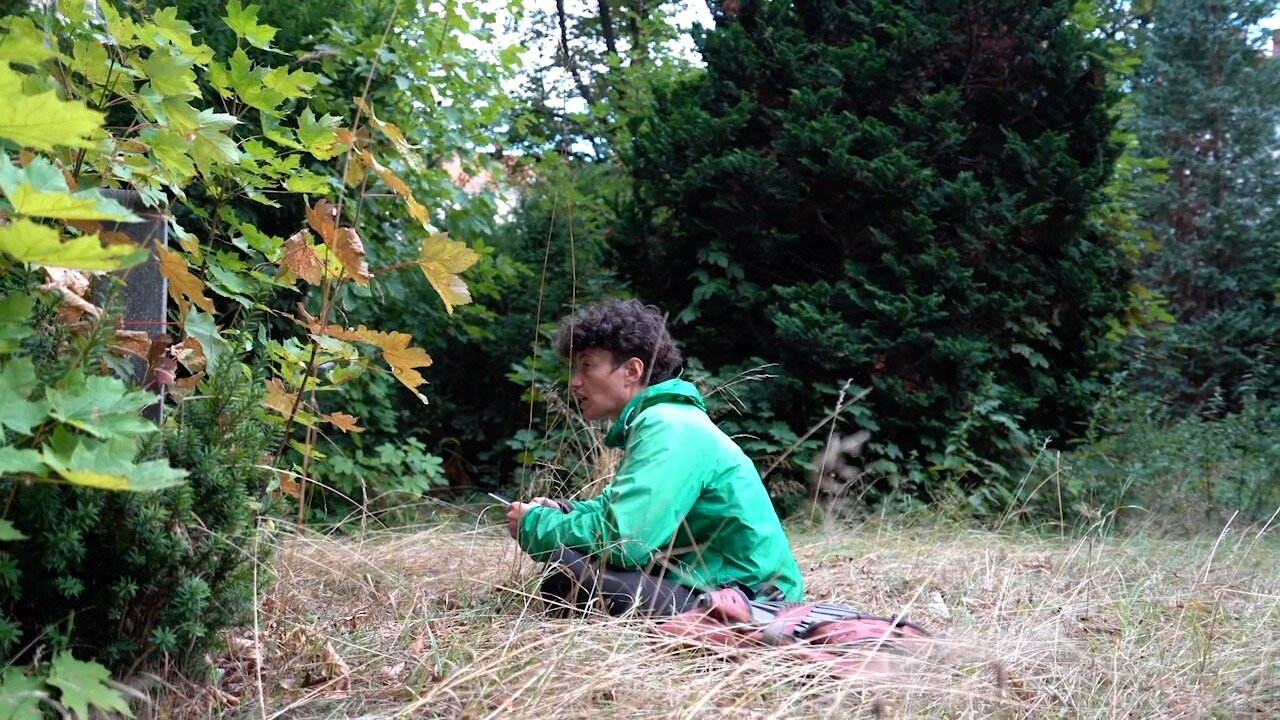
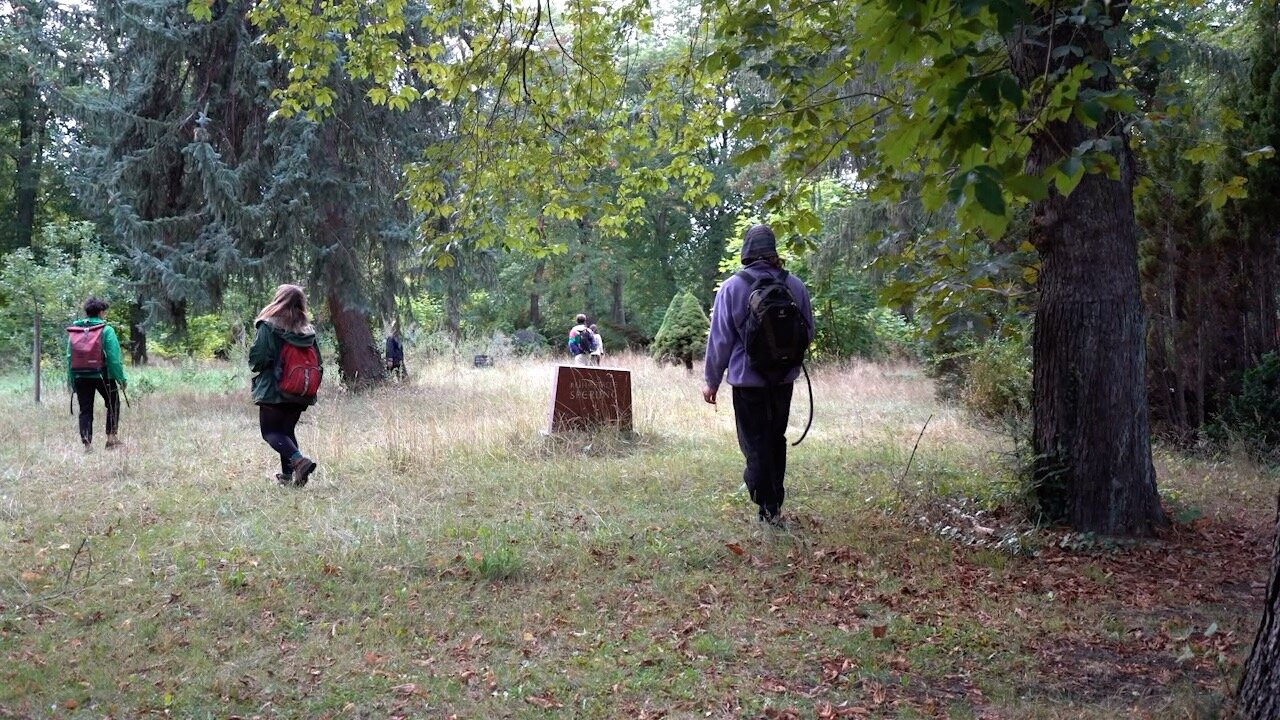
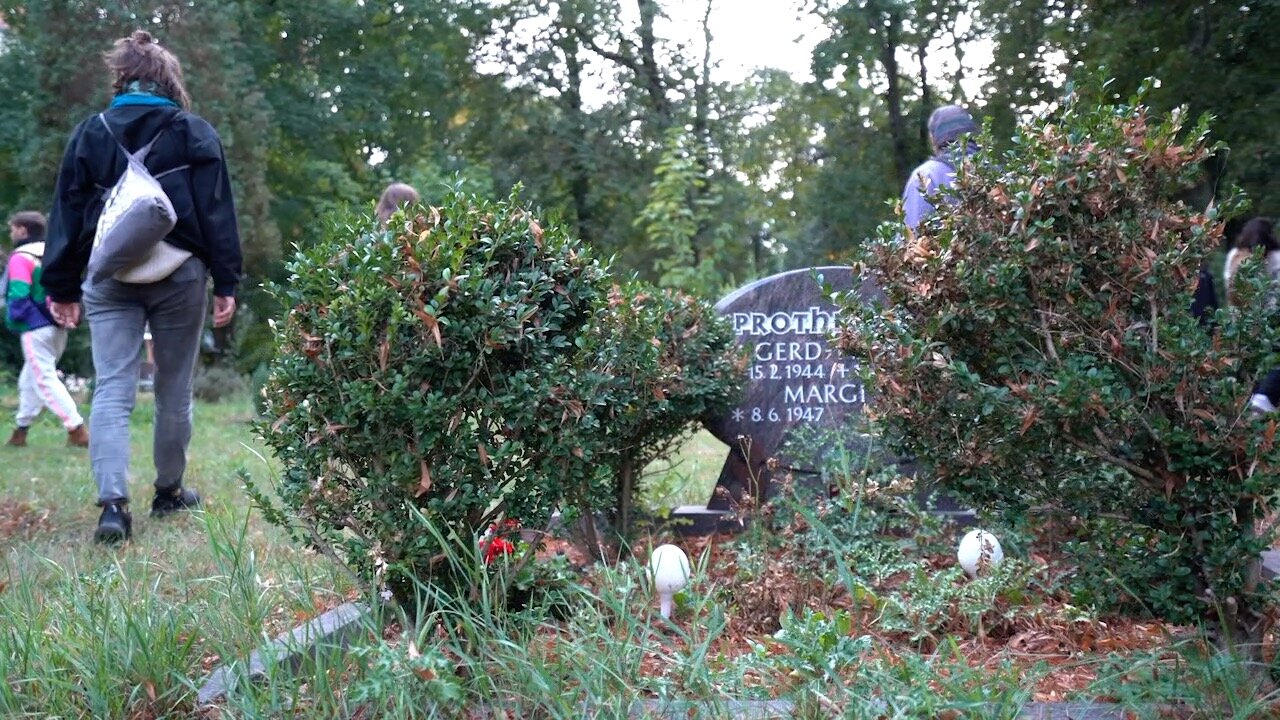
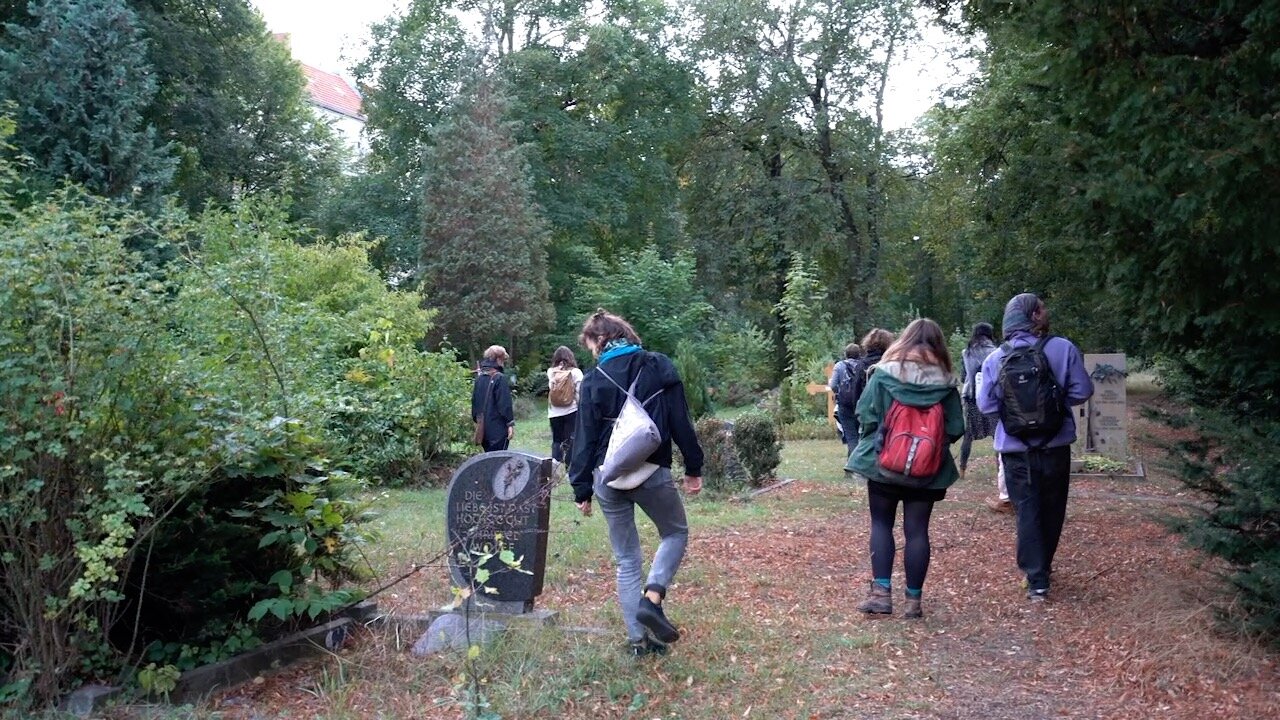
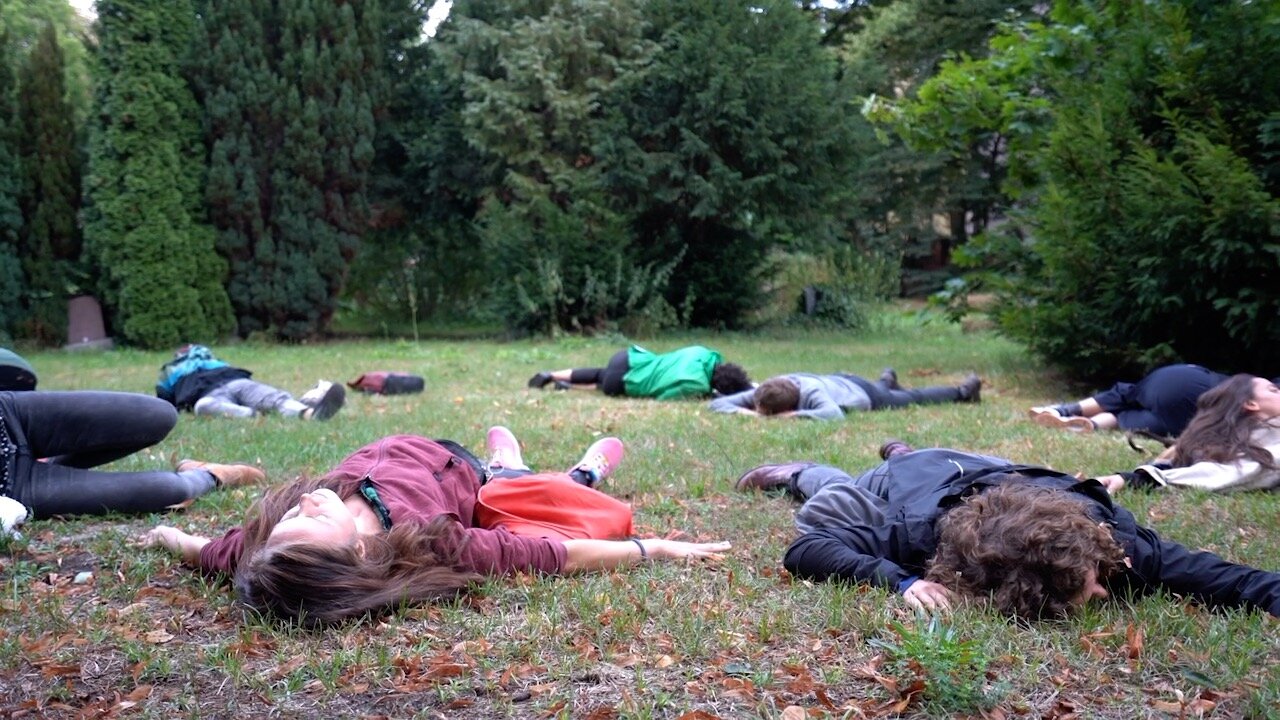
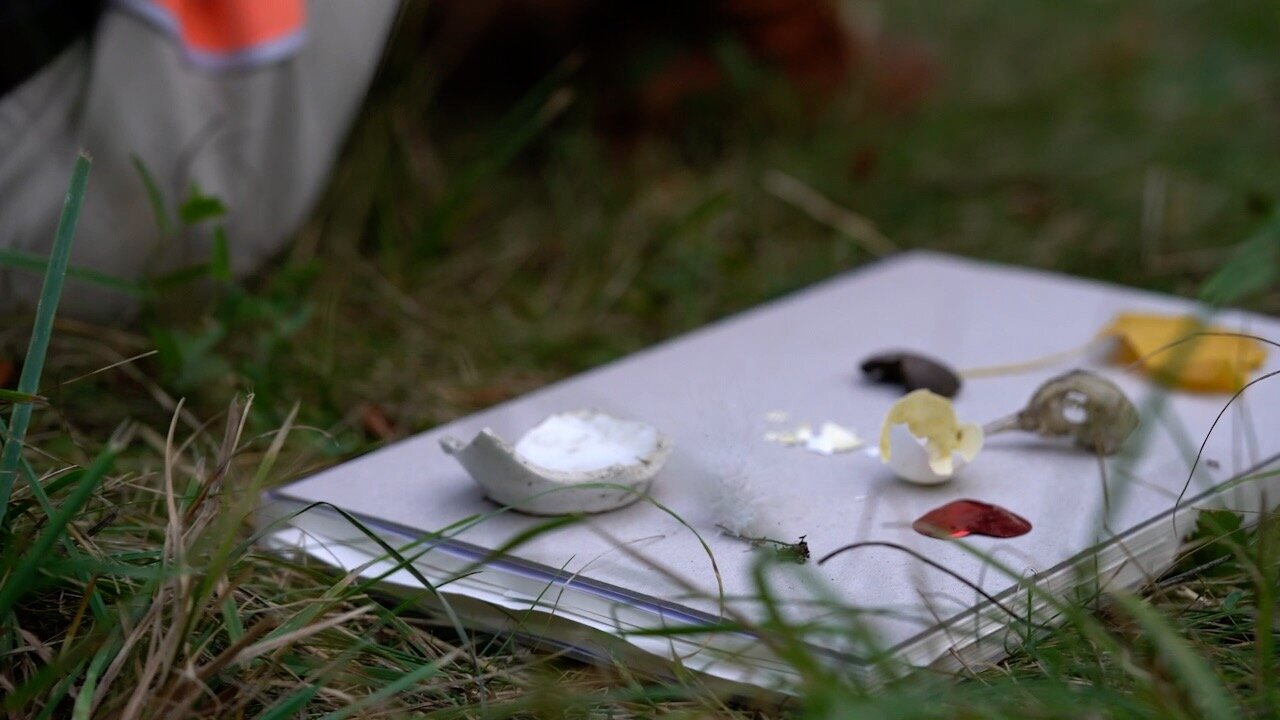
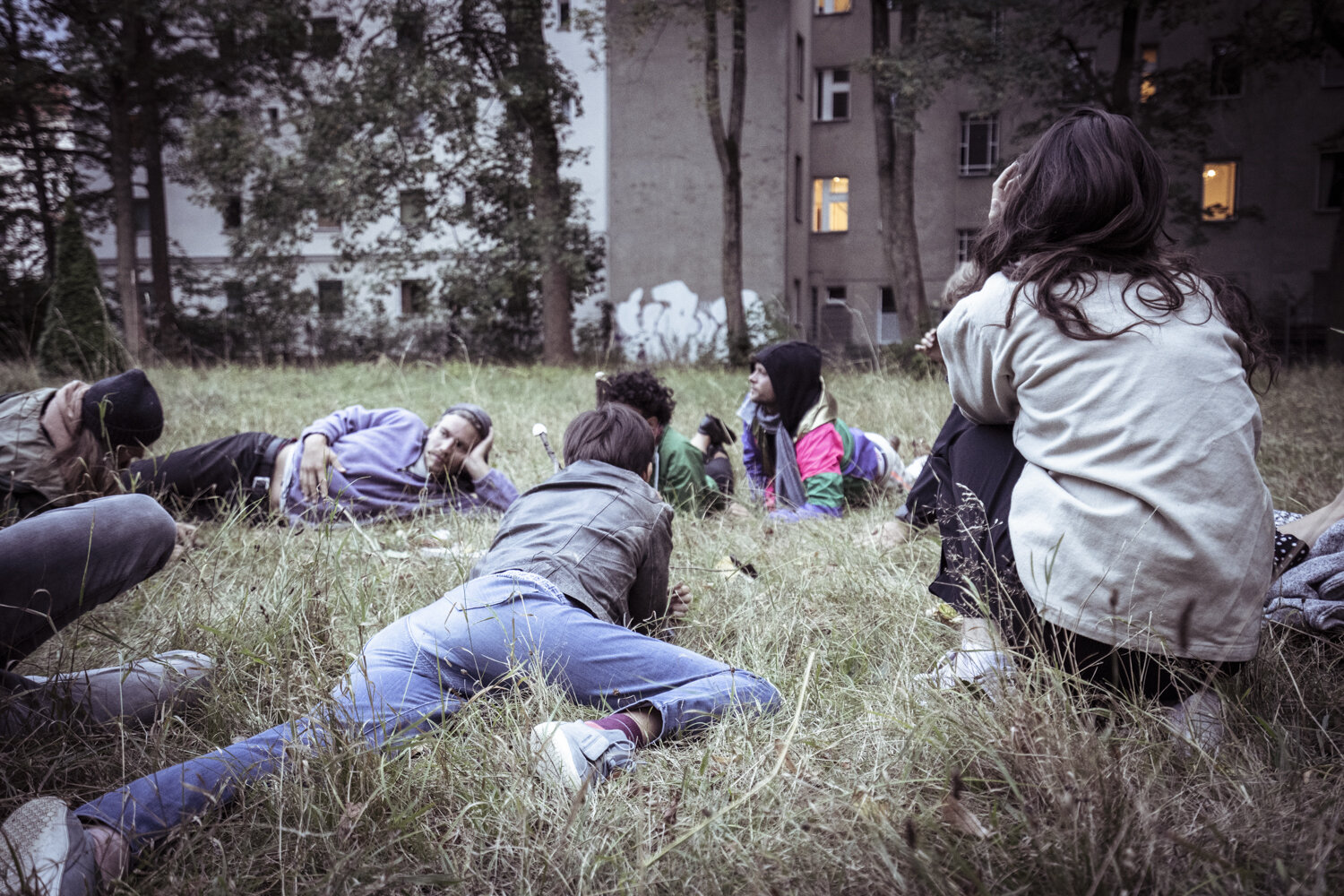
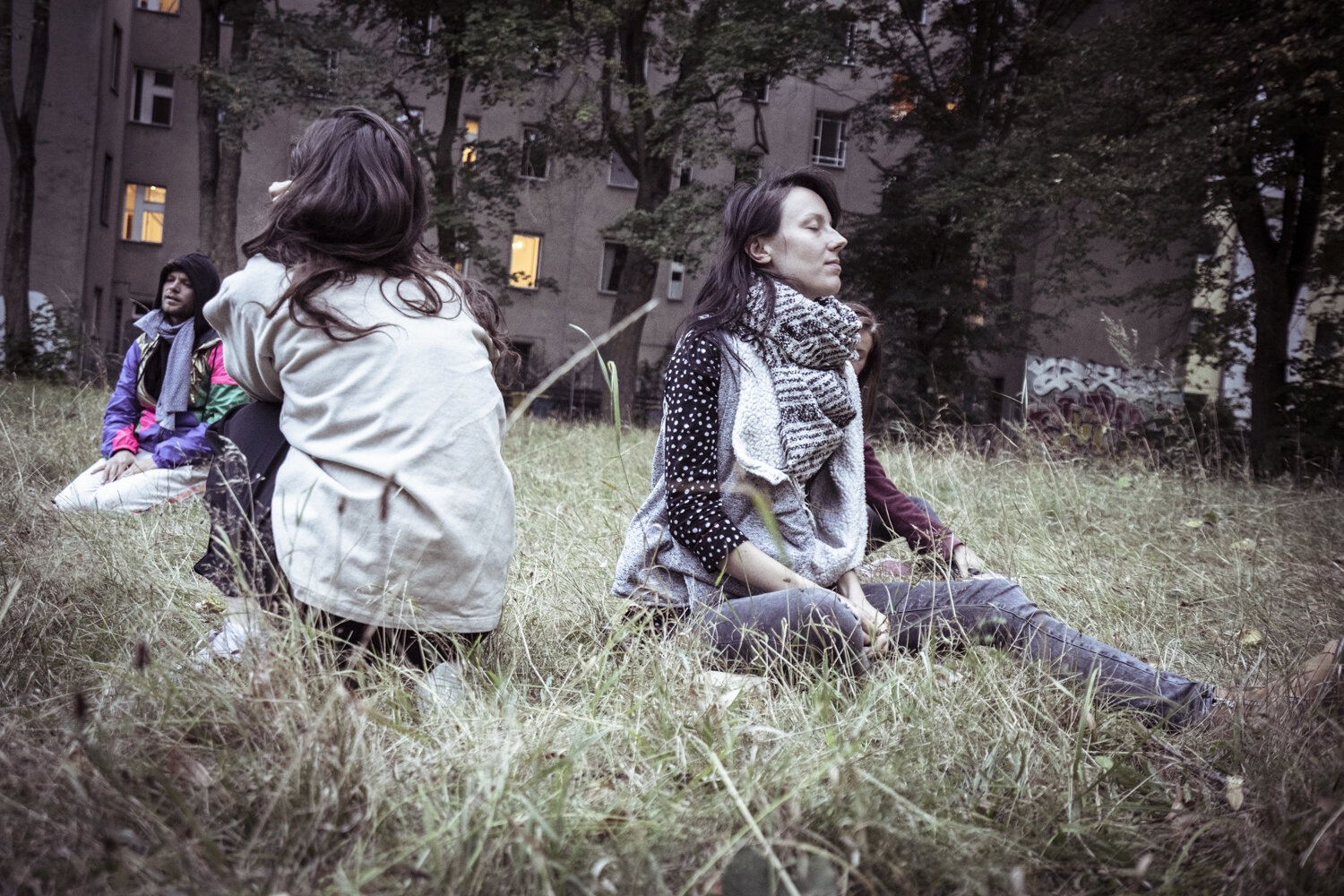
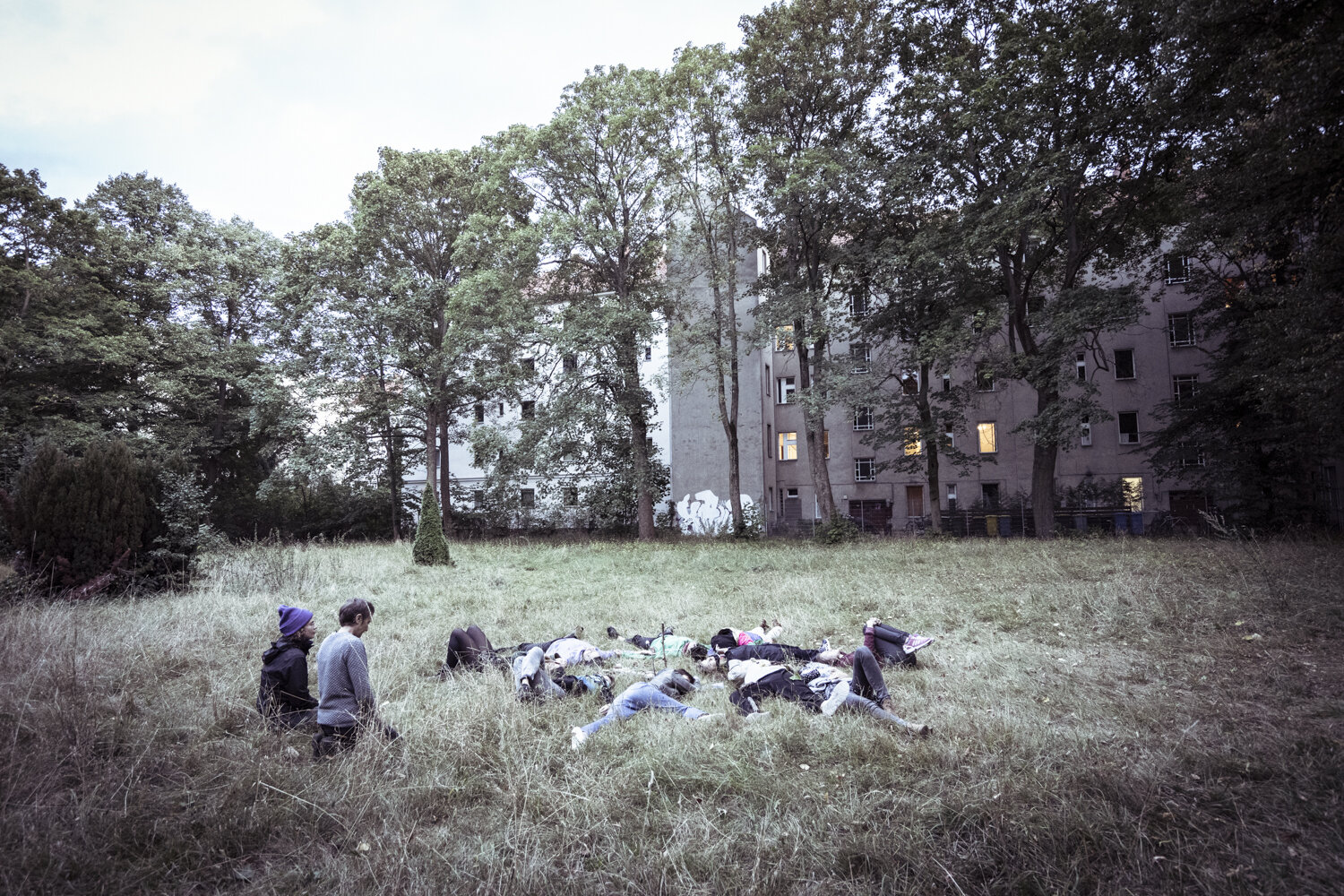
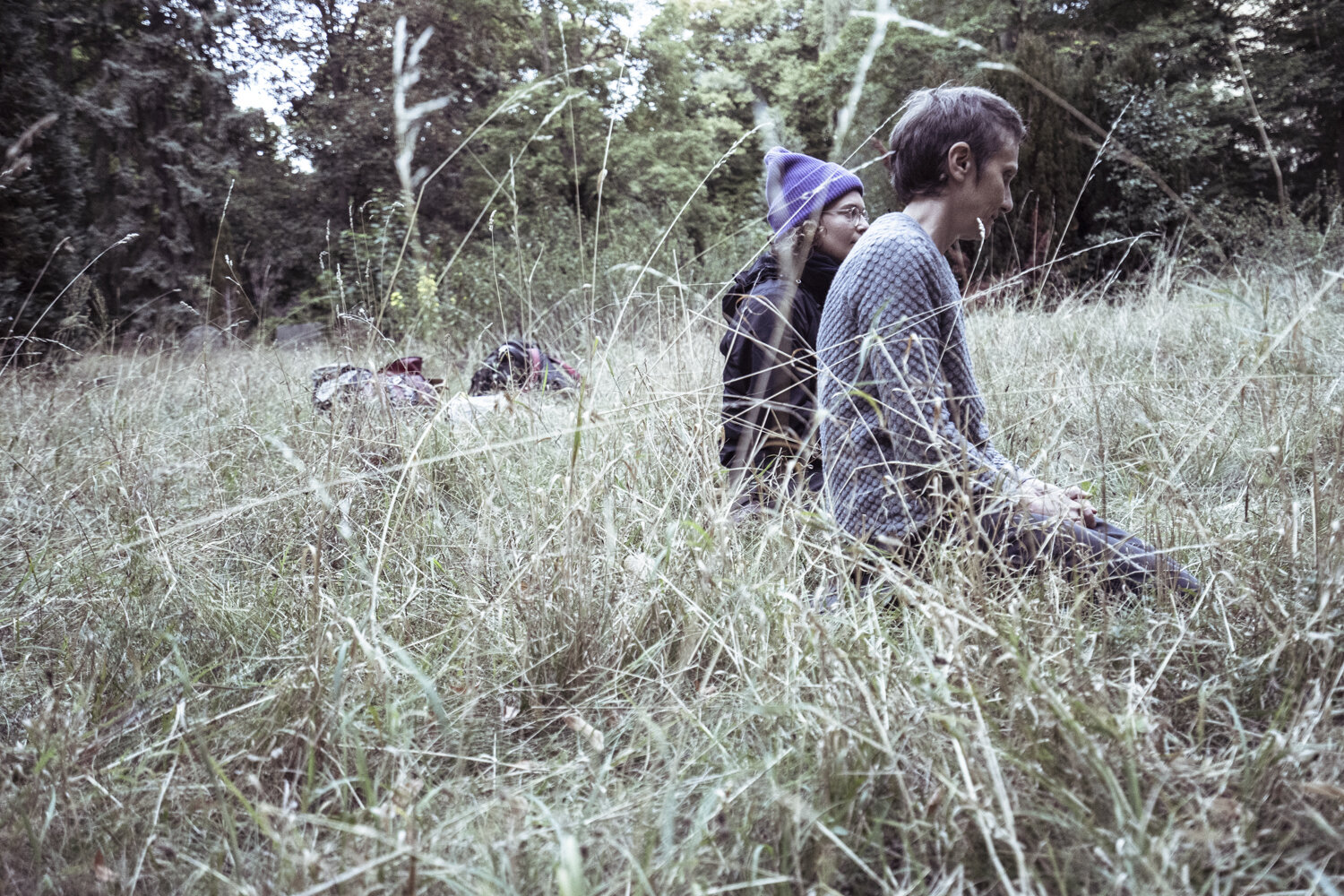
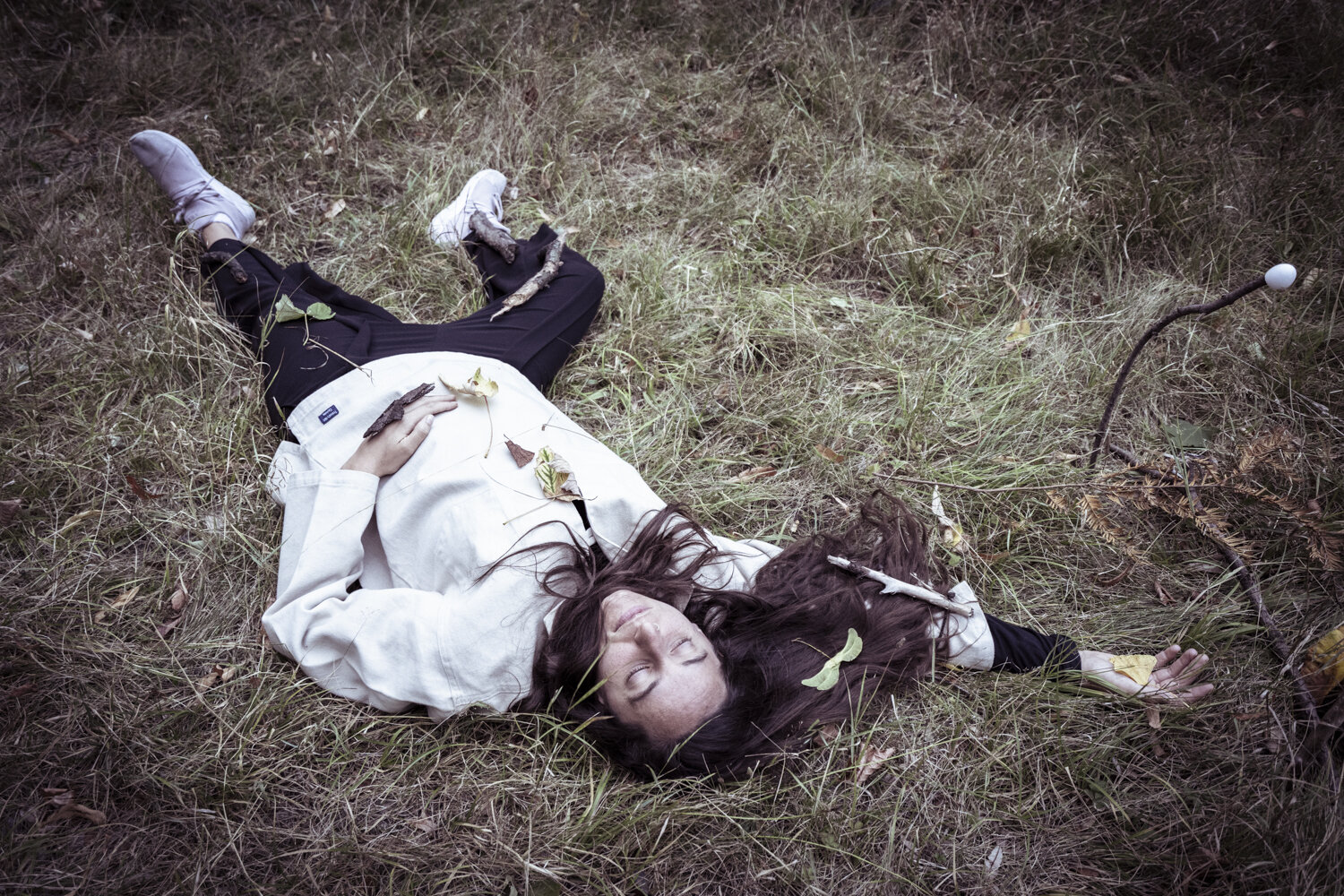
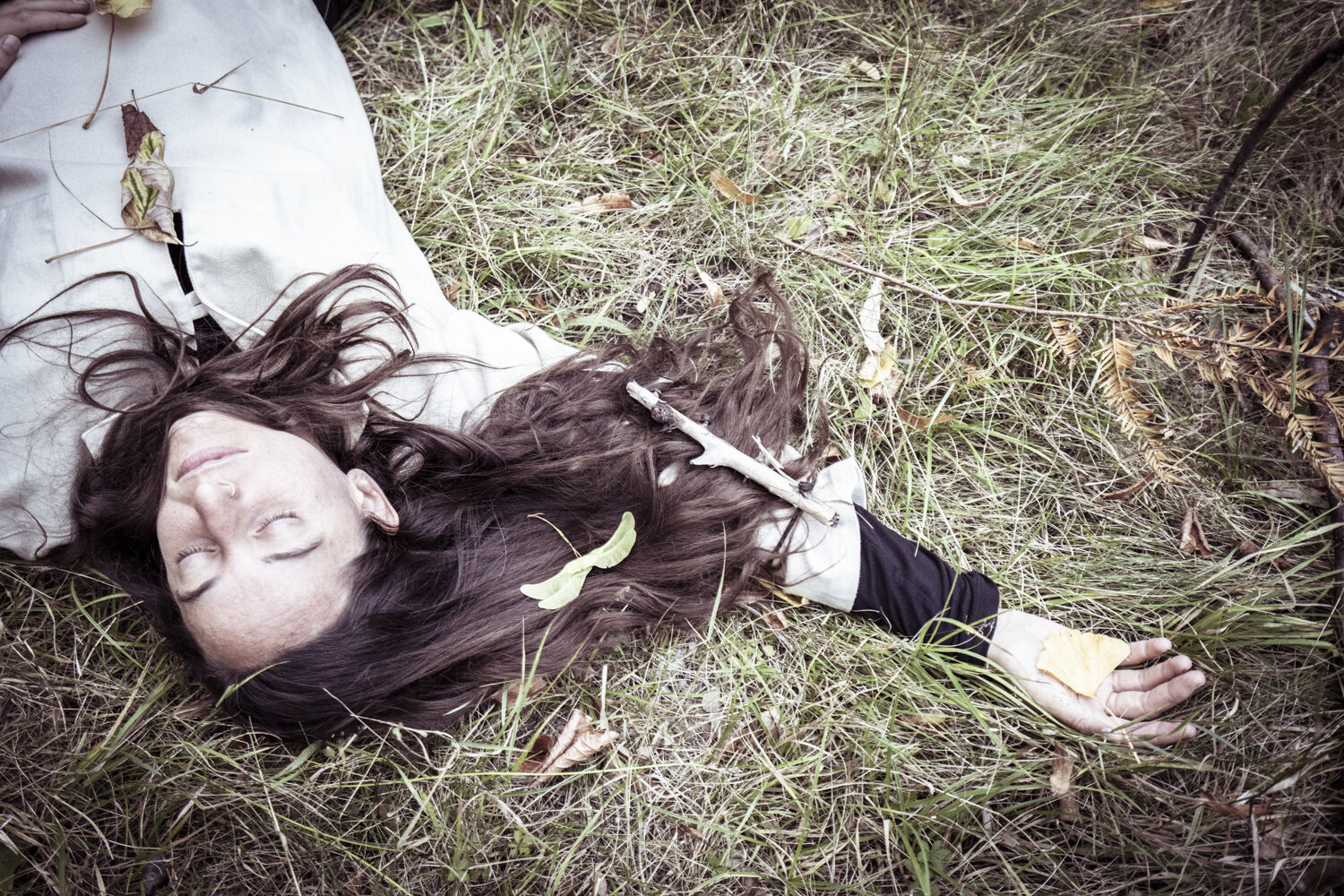
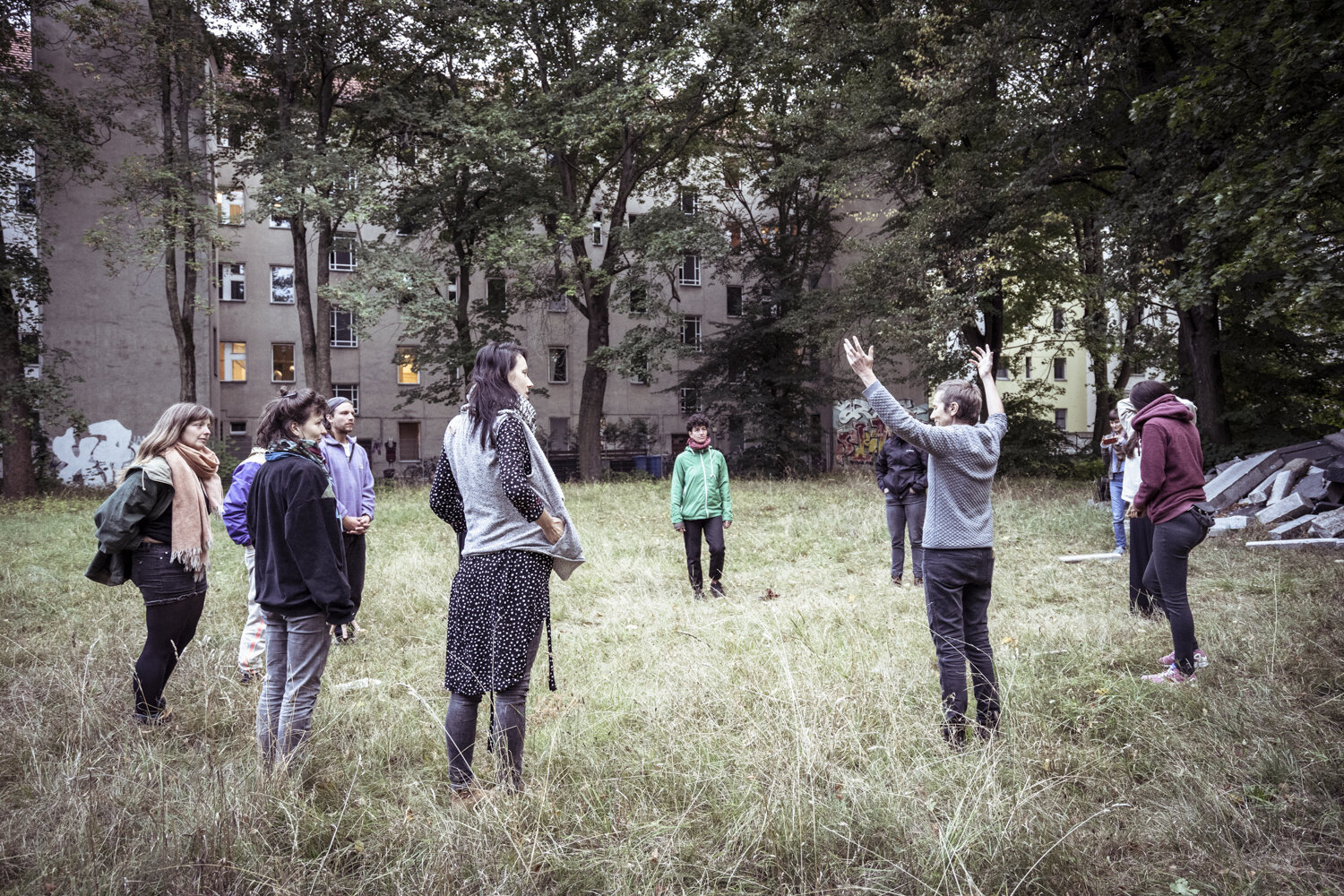
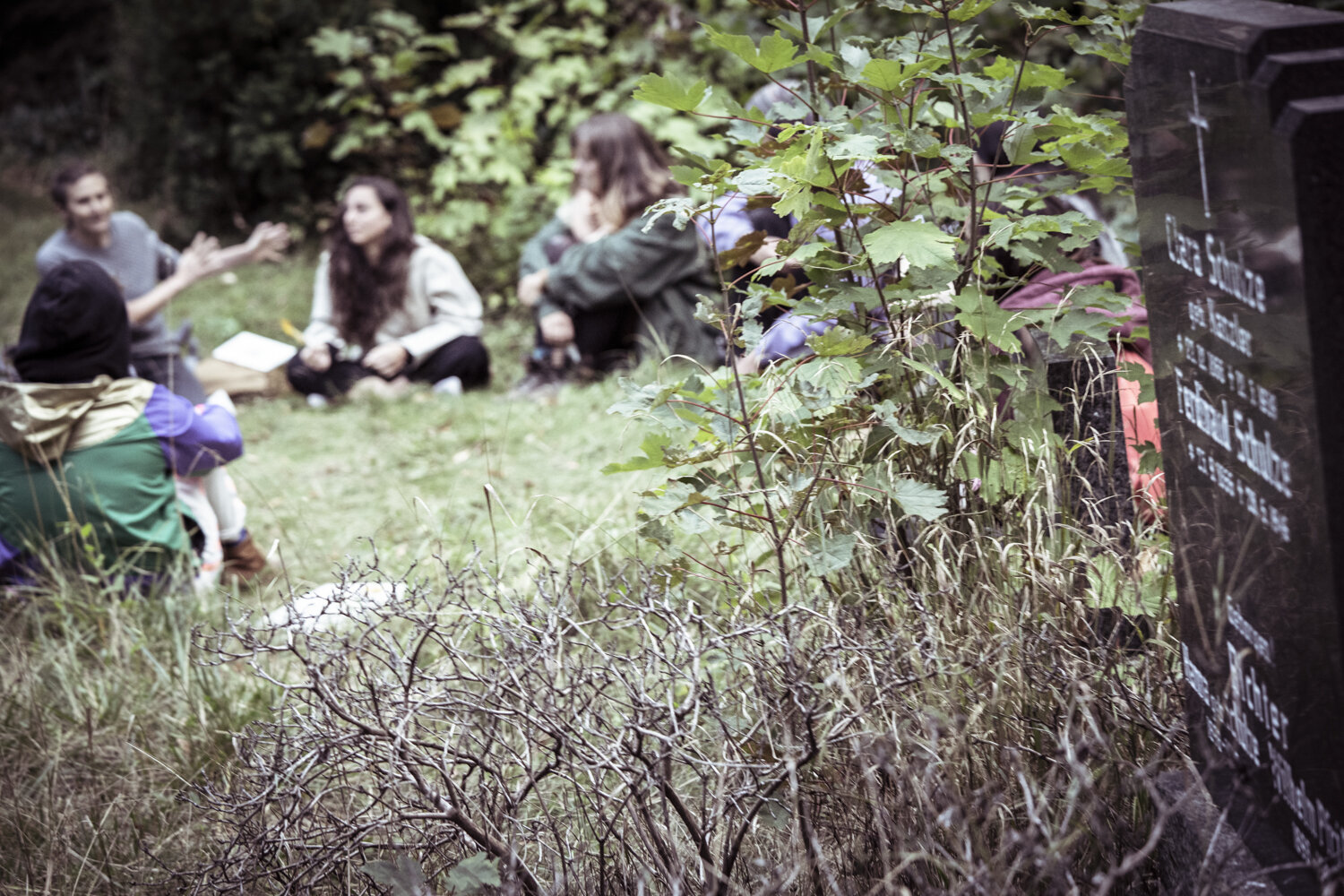
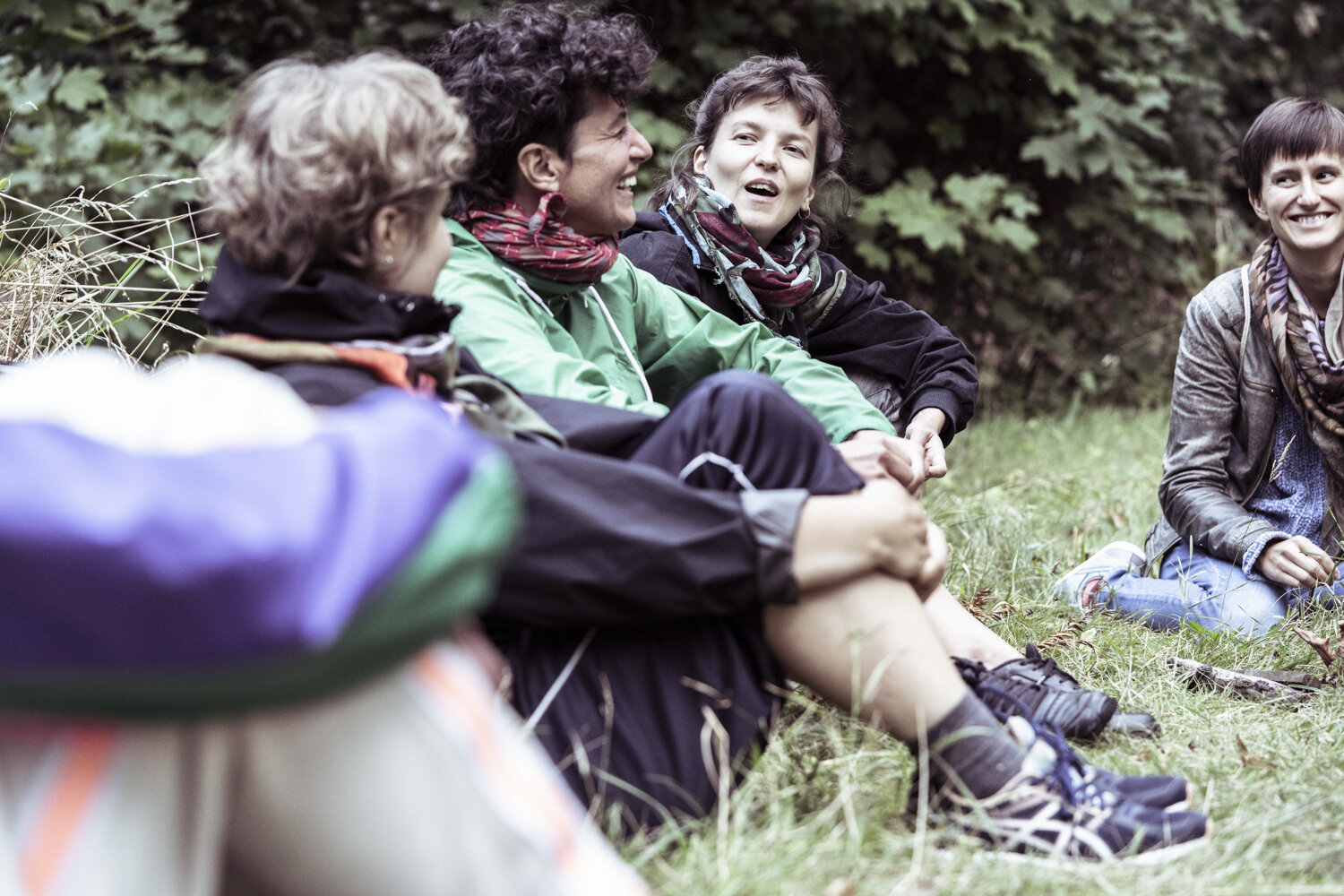

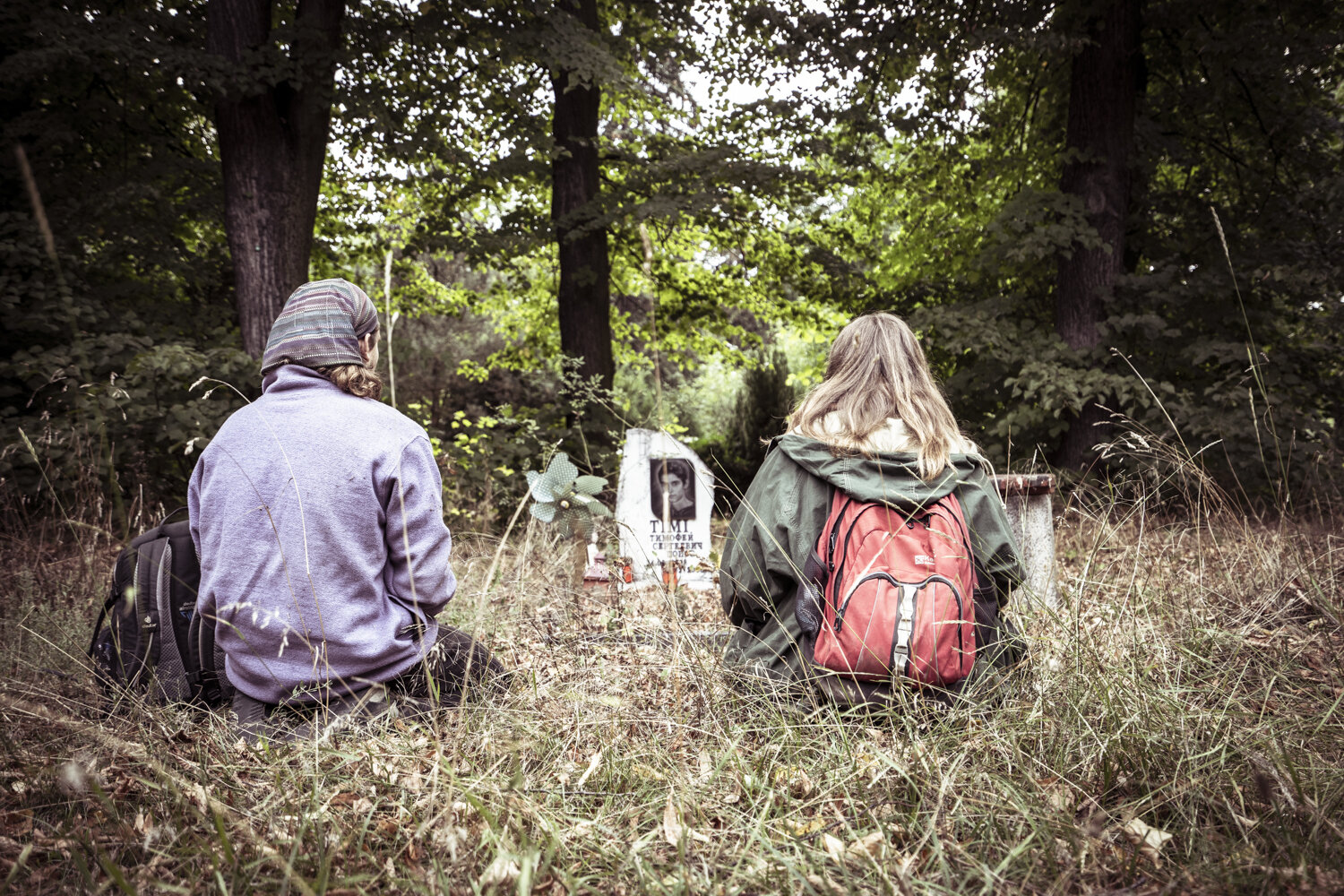
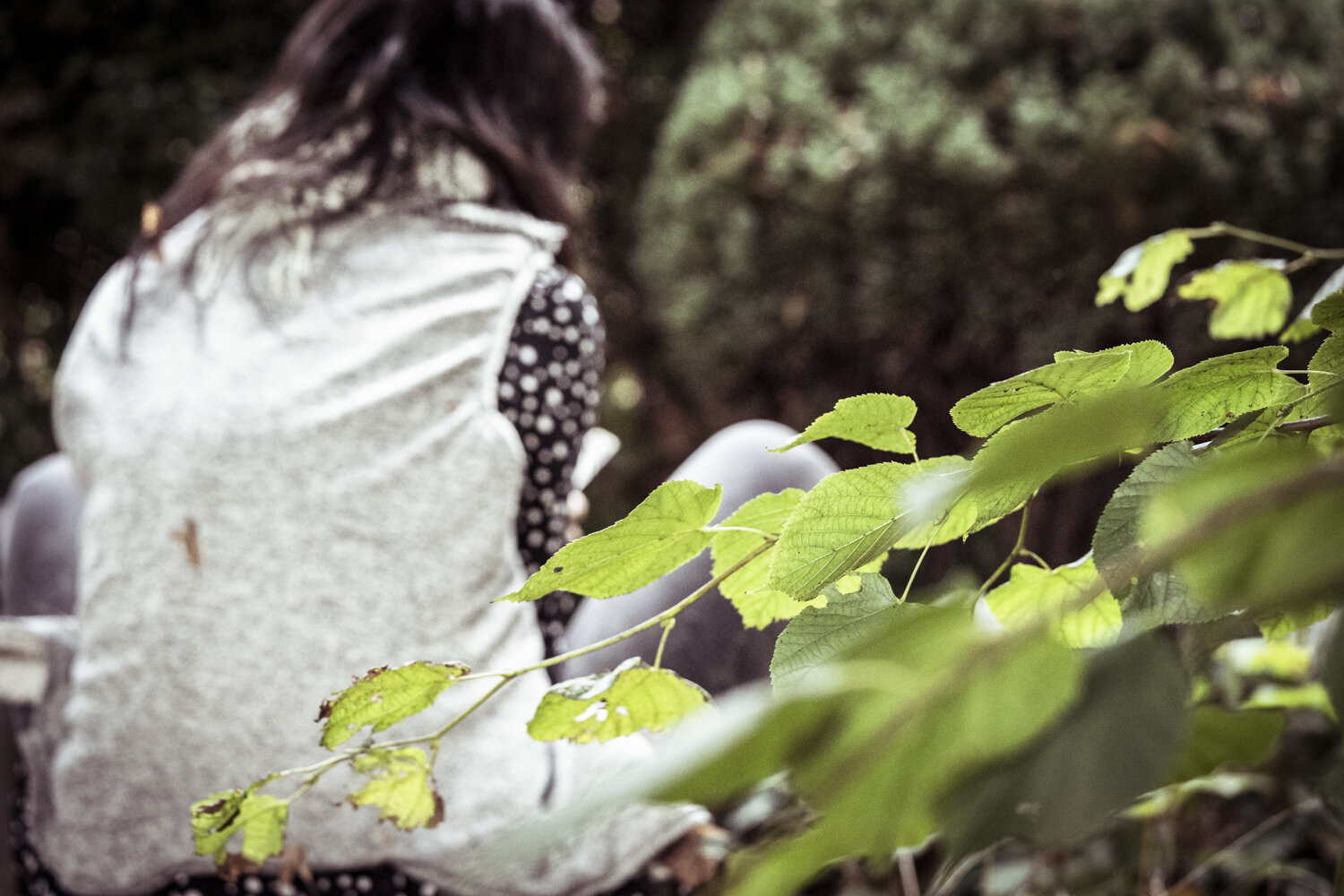

The Surface of Collective Grief - a research…..
In August 2020, with the support by the Women* Making Art in Public Spaces, I proposed two interventions at two different cemeteries in Berlin with the intention share a personal process that I had been undertaking during the pandemic outbreak, whilst searching for a space and a way to somehow make sense of the inability to be close to the dying, to the many dying alone.
Through this experiences I wanted to understand its relevance in a time when collective and personal grief might need to find new processes.
Whilst the two events where run in different places which all brought a unique flavour to it, there were some common aspects:
Participants were invited to bring a book to that they would fee comfortable in reading at a grave of a stranger.
An initial circle where we could share what book we had selected and also to offer a gentle warm up for the body and for its relating to the space.
A wander through the cemetery noticing the resting places that people have created to remember their dear ones; noticing the life that nature brings. Noticing horizontality and verticality and collecting little items from the ground that could go towards a final sculpture.
A reading at a chosen grave, alone or in company.
A group circle where to share our experiences
The creation of a final and collective sculpture, a possible ‘grave’, a collective place of rest, where inner process could somehow meet with the group one, accompanied by a final movement experience which could reveal some dances of reflections and resting.
These two experiences were filled with discoveries and were indeed incredibly experimental.
Listening what brought people to choose their readings, the theme of love and its connection to grief was a remarkable thread. The desire of connecting to deeper realms was felt. Some of the participants were going through some deep grief participants which of course it raises some questions on care. For some people such experience felt very meaningful, for others felt challenging and almost intruding. It often depended on whether one is able to find a meaningful connection and also where he/she/they are at.
Which grave to choose? For some is the rosemary remembering their gardens, for some is the colour of the flowers, for others is a photo, or is the name, or the date or maybe because is forgotten… we find the place we want to read ultimately because we can recognise in it something, and that little something can totally be enough… other times might not be.
In further reflections, it became clearer to me how this could be an opportunity to ask the space (in this case the grave) as a bridge to the far, to the invisible, to the unwanted, to the buried, to the unseen, to the spiritual…. As we look down at a grave we are also inherently look up, to where often is felt the soul could travel. It feels a possibility that the reason we could read to grave, to a place of memory is to see it as an entry point of an hidden underworld, for the words to travel, along roots, along fungi, along caves, along hidden rivers, along strata… to reach the places that we feel so far, so far from us.
Is it just a romantic idea? Just an idea that sounds and look so beautiful? Or could this be really possible?
And where does dance belong in here? Could we gift a dance performance to people that are processing loss? That feels trapped? That feels far away?
I have always been attracted to cemeteries. In every country I go to I tend to visit cemeteries as place custodians of culture, of memory, of humanness. The way a cemetery constructed, looked after and used, tells us so much how a specific community deals with life and death, on a collective and also on an individual level. Berlin cemeteries have something special. Walking through the Cemetery in Bergmannstrasse flourishing trees, curious squirrels, dancing birds, laborious bees and a resident fox remind us of the cycle of life. Yet, with each step we can sense how fragile, how permeable is the surface we walk on as we contemplate the souls resting here, who despite their age, ethnicity, status, colour, will and circumstances, have all found their last breath; they have all surrendered their verticality.
Corona has challenged many of us in dealing with grief, with loss, and in supporting the dying in their transitioning. But it has also brought to surface how inescapable is our inter and intra-connectedness and how much we take for granted distance. Can this place provide us an opportunity to say goodbye to the people we can’t be close to? Can someone else do it for us over there as we do it over here in presence of people we don’t even know?
My deepest gratitude for the incredibly generous participants that supported this research:
Diana Sirianni and Susi Rosenbohm from Women* Making Art in Public Space;
Nora Tormann, Laura Gary, Anni Lattunen, Lukas Geschwind, Leisa Prowd, Josephine Auffray, Aleksandra Adamczyk, Mats Staub, Pippa Samaya, Jan Burkhardt.
Some sections from the participants readings.
"I felt complete stillness, absolutely nothing. Numb".
"I go to the sea and wash the sand of my hands. the wind is blowing behind me. the sandcastle is falling down. I lie down in the salty water. forms I was holding onto as my existence depend on them fall down and dissolve. millions and billions grains of sand on the long sandy beach they exchange looks with the stars in the sky."
"For Those Who Have Died"
Tis a fearful thing
To love
What death can touch.
To love, to hope, to dream,
And oh, to lose.
A thing for fools, this,
Love,
But a holy thing,
To love what death can touch.
For your life has lived in me;
Your laugh once lifted me;
Your word was a gift to me.
To remember this brings painful joy.
Tis a human thing, Love,
A holy thing,
To love
What death can touch.
——————————————————————————————————————————————————————————————————————————————————
“To live in this world you must be able to do three things:
to love what is mortal;
to hold it against your bones knowing your own life depends on it;
and, when the time comes to let it go, to let it go.”
Mary Oliver